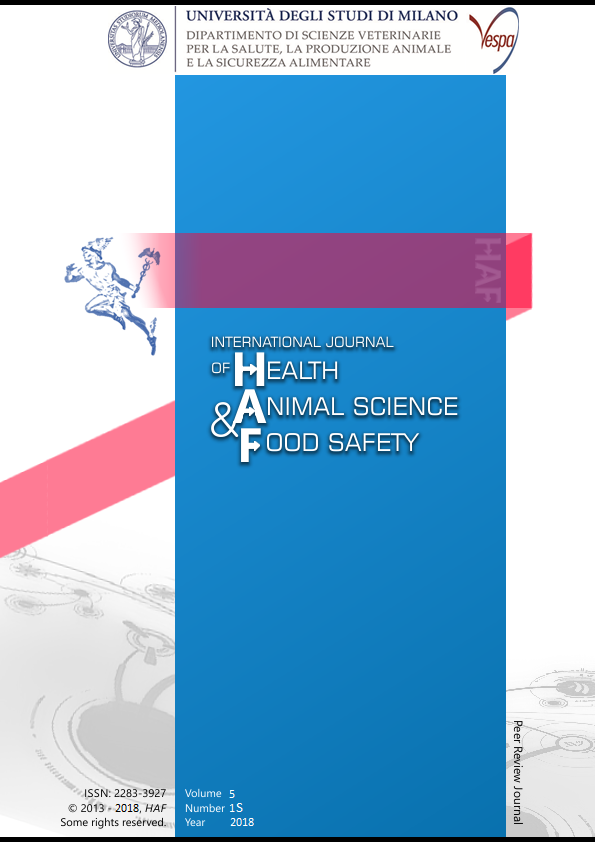Abstract
In the search for the reduction of antibiotics in farm animals, a concept was developed based on studies with medium-chain fatty acid with 6-12 atoms (MCFA). In particular, they have been shown to exhibit against Gram+ bacteria in piglets at relatively high concentrations. However they can be hardly used as such because of their repellent odour and taste and for their rapid absorption in upper gastrointestinal tract. These problems could be overcome by the generation of monoacylglycerol, but esterification is usually carried out on a silica base, which reduces the concentration of FA, therefore limiting the antibacterial effects. Our hypothesis is that the saponification with calcium salts might positively affect their concentration in the GIT. The aim of the present study was to examine the effects of Laurate calcium soap (C12-Ca soap) on growth performance and health of post-weaning piglets. At weaning, 192 crossbreed Topics piglets were assigned to 3 experimental groups consisting of 16 pens (4 pigs/pen each): CTR (negative control), T1 (basal diet plus Amoxycillin at 400 mg/kg), and T2 (basal diet plus C12-Ca soap at 1 kg/ton). Gain and feed consumption did not differ among groups. Feed efficiency was higher in T1 (0,61) and T2 (0,58) than CTR (0,51) (P<0,01). Mortality was 0 in T1, and reduced in T2 (4,7%) compared to CTR (10,9%). These preliminary results suggest that saponification of MCFA may be a valuable alternative to in-feed antibiotics, used for growth promotion, and even for enhancing health in post-weaning piglets.
Riferimenti bibliografici
Decuypere, J. and Dierick, N. (2003). The combined use of triacylglycerols containing medium-chain fatty acids and exogenous lipolytic enzymes as an alternative to in-feed antibiotics in piglets: concept, possibilities and limitations. An overview. Nutrition Research Reviews, 16(02), p.193.
Desbois, A. and Smith, V. (2009). Antibacterial free fatty acids: activities, mechanisms of action and biotechnological potential. Applied Microbiology and Biotechnology, 85(6), pp.1629-1642.
Hanczakowska, E. (2017). The Use of Medium-Chain Fatty Acids in Piglet Feeding – A Review. Annals of Animal Science, 17(4).
Lallès, J., Bosi, P., Smidt, H. and Stokes, C. (2007). Nutritional management of gut health in pigs around weaning. Proceedings of the Nutrition Society, 66(02), pp.260-268.
Zentek, J., Buchheit-Renko, S., Männer, K., Pieper, R. and Vahjen, W. (2012). Intestinal concentrations of free and encapsulated dietary medium-chain fatty acids and effects on gastric microbial ecology and bacterial metabolic products in the digestive tract of piglets. Archives of Animal Nutrition, 66(1), pp.14-26.
This work is licensed under a CC BY-SA 4.0 international

